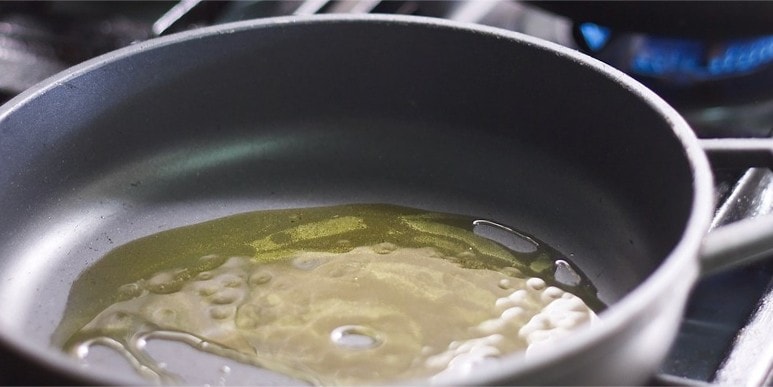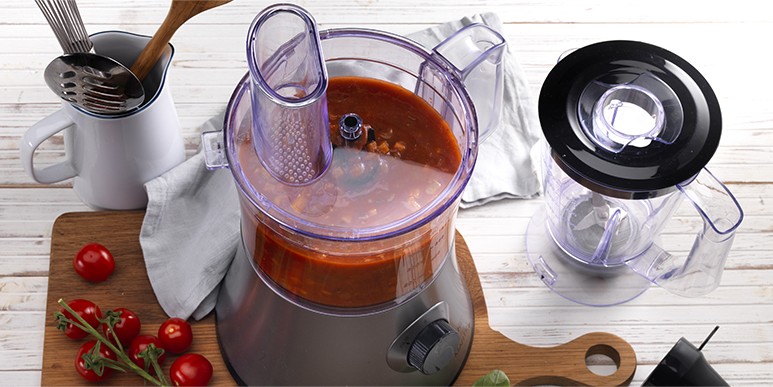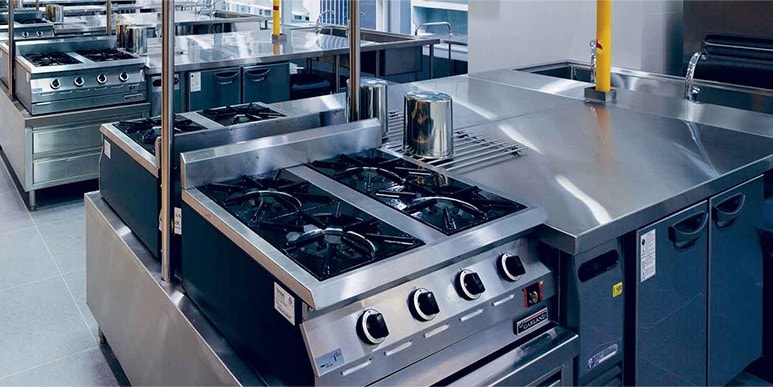Essential Kitchen Equipment for Restaurants
For your kitchen to run optimally, you’ll want to equip it with these essential tools.
Even in established restaurants, good chefs who work with quality ingredients can be let down by inferior tools. With so many different types of restaurant kitchen equipment available, we understand that it can be a challenge to identify just what you need. Here’s a selection of both common and specialised kitchen equipment that is essential in almost any restaurant kitchen.
Pans and woks

Non-stick sauté and frying pans
Also known as a sauteuse and sautoir, sauté and frying pans are shallow skillets with a single long handle. Sauté pans are marked by sloping sides and frying pans have straight sides.
Ideal for: Sautéing food in a thin layer of oil.
Griddles
A broad flat cooking surface with no sides, a griddle is great for frying hamburgers, bacon or sausages.
Ideal for: Shallow frying, sautéing food over a direct heat source.
Woks
A must-have for any Chinese kitchen, the wok is a versatile round-bottomed pan that can be used for a variety of cooking methods, but is best known for stir-frying. Because of its round bottom, the wok works best with a high heat gas hob or traditional pit stove.
Ideal for: Stir frying, essential for many Chinese-style dishes.
Processors, mixers and tools

Food processors
Like a food blender, food processors can be used to grind, puree, blend, emulsify, crush and knead. Special attachments can also help with slicing, julienning and shredding – cutting down valuable food preparation time.
Industrial mixers
Perfect for pastries and pastas, an industrial mixer with bowls of varying capacities can be used to mix, beat, whip and knead dough – saving you a lot of time and effort.
Immersion blenders
As a standalone unit, the immersion blender is great for pureeing, liquefying and emulsifying food in the cooking vessel – perfect for blending large batches of soup or stock within the pot itself.
Meat thermometers
This device measures the internal temperature of your food and lets you check that they are cooked on the outside and inside – so your meats will arrive on customers’ tables perfect, each and every time.
Stoves, ovens, grills and more

Stoves
-
Open burners Flattops Induction cooktops Featuring individual grate-style burners that allow for easy adjustment of heat, open burners are versatile stovetops that can accommodate all types of pots and pans, making them the most common stovetops in most dining establishments. Consisting of a thick cast iron or steel plate set over a heat source, flattops distribute heat evenly and consistently. Like a griddle, flattops are perfect for cooking methods that require little or no oil. Using magnetic attraction between the cooktop and the metal pan, the induction cooktop directly heats up the pan while keeping the stovetop cool. This significantly lowers the risk of burns and saves energy.
Ovens
-
Conventional ovens Convection ovens Microwave ovens Typically used for roasting or baking large food items, conventional ovens use bottom heat conducted through the deck and into the cavity to cook food. A modification of conventional ovens, the convection oven uses fans to circulate heated air around the food. From roasted meats to fluffy pastries, the uniform heat distribution allows all kinds of food to cook quickly and evenly. Not generally used for cooking, these devices can be helpful for thawing food safely and quickly – significantly cutting down preparation time for selected menu items.
-
Deck ovens Impingement ovens
Combi ovens Often found in artisan bread bakeries, deck ovens use conduction heat to bake – penetrating dough and producing quality baked products. They require a skilled baker to operate, but can produce outstanding results. These ovens feature improved airflow rates and heat transfer leads, reducing baking times by up to 50% while maintaining high quality and standards.
Designed to deliver the functions of a steamer and convection oven to kitchens, combi ovens are exactly what they claim to be – a combination of several ovens. Its features include convention, steam and combination cooking/baking.
Grills
-
Grills Broilers Salamanders Typically used to create a smoky, burnt flavour in food, the grill cooks with heat generated from below either by wood, charcoal, gas or electricity. Commonly used to give food a slightly charred outer layer while keeping the inside moist, broilers are typically found as a setting in a gas or electric oven with an overhead heat source. With an overhead heat source like a broiler, salamanders are independent units primarily used to finish or glaze foods. Some restaurants use it to warm up food or keep dishes warm before service.
Others
-
Sous vide cooker These machines make precision cooking simple, utilising a process of vacuum sealing food and cooking it in a water bath. The cooker heats the water and circulates it, ensuring food is cooked evenly.
Refrigerators, freezers and sealers
-
Walk-in refrigerators Blast chill freezers Vacuum sealers Used to store and keep ingredients that don’t require freezing, walk-in refrigerators are room-sized units with temperature and humidity controls for individual sections. These freezers cool food quickly, preventing bacterial growth and ensuring the quality and safety of your ingredients.
Bag sealers used for packaging dried items, coffee and other foods that need to be stored for some time.
When selecting the right mix of kitchen equipment, consider these factors:
- Your menu and how your food is best prepared
- Your ingredients and storage needs
- Kitchen space
- Budget
With the right selection of kitchen equipment, quality ingredients and a skilful chef, your kitchen now has everything it needs to start creating exceptional dishes that diners will rave over.
Back to Restaurant Management
What you'll get:
- Access to free Chef trainings
- The best recipes and tips from Chefs around the world
- The latest culinary trends